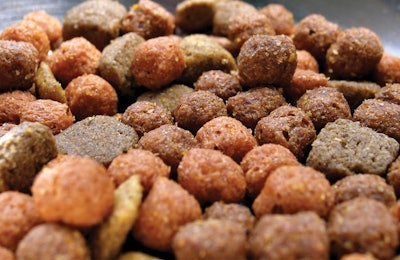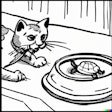
Of the number of issues in the news of late regarding safety concerns with pet foods, perhaps receiving the most attention are the reports of adulteration with pentobarbital. There has been much speculation as to the source of this contamination, including the oft-repeated allegation of inclusion of euthanized dogs and cats in pet foods.
What is pentobarbital and what is it used for?
Pentobarbital is an animal drug approved by the US Food and Drug Administration (FDA). Used properly, it is a safe and effective short-acting surgical anesthetic for use in dogs, cats and horses. It also can be used to relieve convulsive seizures in animals. Because it is rapidly metabolized there would be negligible if any risk of other animals' exposure to the drug through these uses. In higher concentrations and in combination with other drugs, though, it is approved as a humane and rapid euthanasia agent in dogs. FDA law restricts its use to by or on the order of a licensed veterinarian.
Further, because of its addictive qualities as a barbiturate and abuse potential by people, pentobarbital is subject to the Controlled Substances Act as enforced by the Drug Enforcement Administration (DEA). Veterinarians who do not store the drug in a manner to prevent theft or misuse and/or do not keep records sufficient to account for use for legitimate purposes may lose their DEA registration (severely hampering ability to practice) or suffer other serious penalties.
While pentobarbital's approval by FDA as a euthanasia drug is expressly for dogs, it is likely the agent of choice for other species as well, especially other small pet animals. It also may be an option for horses or other livestock kept as companion animals. However, for economic and other reasons, it would seem to be a very unfavorable drug for use in any commercial livestock operation. FDA regulations make very clear that it cannot be used in animals intended for food.
In fact, the regulation expressly dictates that "euthanized animals must be properly disposed of by deep burial, incineration or other method in compliance with state and local laws, to prevent consumption of materials by scavenging wildlife." That is because the euthanized animal would not have had time to metabolize the drug after administration, hence significant concentrations may still be present in the tissues after death. That concern can rationally be applied to any materials intended for use in animal feed as well, so while there is no specific regulation or written guideline expressly prohibiting the inclusion of materials derived from animals who died by administration of pentobarbital in feed ingredients, that is certainly a reasonable interpretation.
Rendering is one of those "other methods" of animal disposal, including disposal of euthanized pets. However, while most think only of rendering in terms of production of fats and protein meals for animal feed, there are in fact many different processing streams within the industry. Rendered materials can also go into fertilizers, lubricants and many non-edible consumer products. So, the fact that a euthanized animal is rendered is not de facto evidence of its ultimate inclusion into animal feeds. With other viable options for the renderer at hand, there is simply no logical incentive to do that.
Pentobarbital in pet foods
In its report of its study in the early 2000s, FDA did find residues of pentobarbital in some pet foods containing rendered or hydrolyzed materials. However, the concentrations were quite low (in the ppb range). So, while pentobarbital does appear to survive the rendering process, simple dilution by the larger mass of rendered materials brings the concentrations down to where no adverse effect is anticipated. That would be different in the case where non-rendered animal tissues were included, where residues would be expected to be higher and less evenly distributed.
FDA did not determine the source of the pentobarbital in the pet foods, though. It did specifically analyze pet food samples for the presence of dog and cat DNA and found no evidence in any samples. Whether the method of analysis for DNA was of sufficient sensitivity to detect it at the likely dilution levels is another matter. Still, ruling out pets, FDA speculated that the residues were likely the result of materials from euthanized cattle or horses.
FDA did not initiate any new enforcement policies as a result of its study in 2002. Regardless, FDA has made it extremely clear in recent documents that the use of materials from euthanized animals is never allowed, and no tolerance has been established to allow for the presence of any pentobarbital in animal feed, irrespective of risk of actual harm to the animal consuming it. At this time, it is still unclear where it may be originating, and hopefully further investigation of the most current incident will be enlightening so definitive steps can be taken.
In the interim, pet food manufacturers must practice due diligence to mitigate the risk. Careful scrutiny of suppliers, as well as establishment of a planned testing program, appear highly prudent. After all, regulators and others will likely be testing your products, too!
For more insights by Dr. Dzanis


















